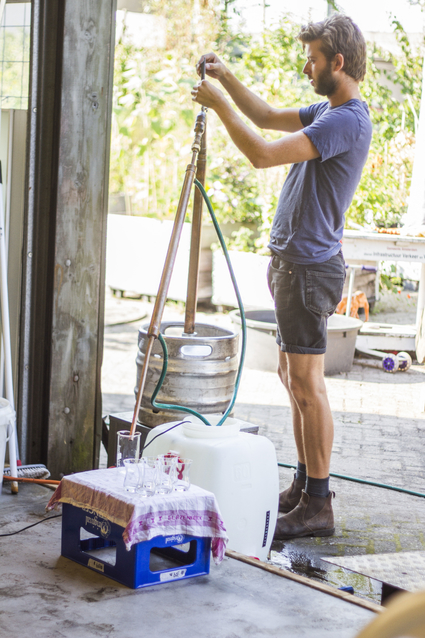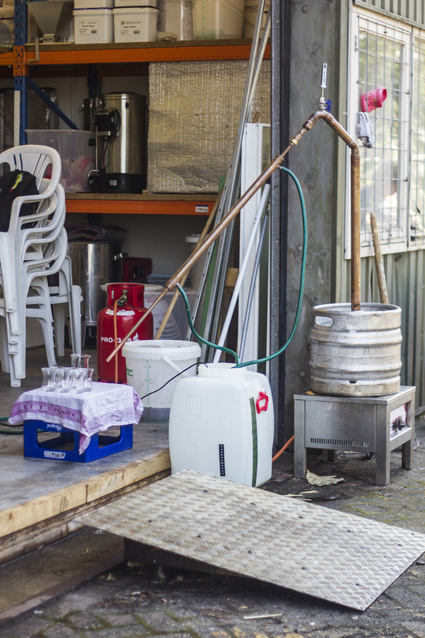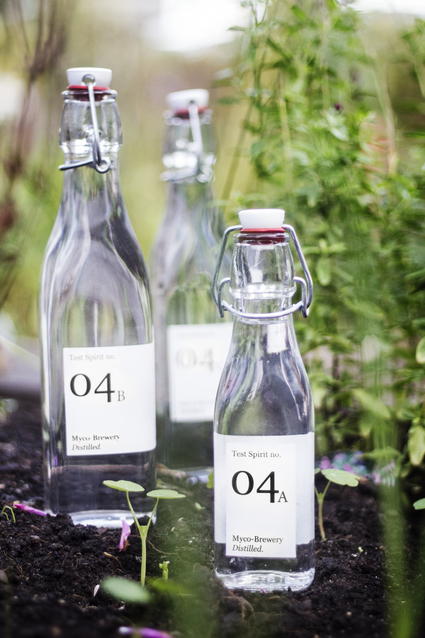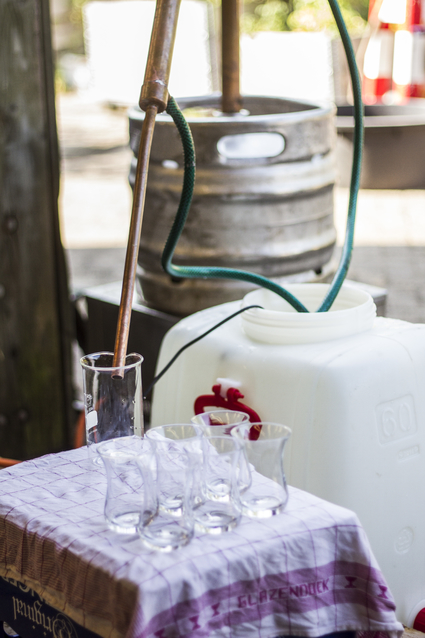A nice property of this technique is that since it gives a way to concentrate volatile molecules, it allows you to extract smells from a liquid, since smells are, by definition, volatile (they have to reach your nose after all).
In traditional distillation, the distiller heats up the liquid until it starts to boil. The vapour that comes off contains more of the volatile molecules than of the other ones, since they escape the surface more easily. This vapour is then led through some piping to a “condenser”. The condenser is a part of the system where the vapour is cooled down to a temperature where the vapour becomes liquid again so it can be easily collected.
The condensed liquid is composed of the same molecules as the vapour, and is therefore richer in the volatile molecules than the original mixture.
Since there are usually many smell molecules in the original liquid, all with different volatilities, the smell of the distillate changes drastically during the distillation. To be able to isolate different components as much as possible, I collect the condensed vapours in new glasses every few minutes.
The first few experiments will be distillations of so called "young beer". This is a fermented malted grain soup that would become proper beer if fermented once more. However, before it is allowed to do so, I put the alcoholic soup in the still and extract the odours (and the alcohol). These first few batches yielded spirits with an abv. (alcohol by volume) of about 60%. The associated smells covered a wide olfactory spectrum, ranging from nail-polish remover and wet cardboard, to malty grains and fresh pears with banana. Future distillations will use different kinds of base mixtures, and have some herbs added to the system. I'm also working on upgrading the whole system to work under vacuum, which could bring significant changes in the collected odours. Updates will follow.



